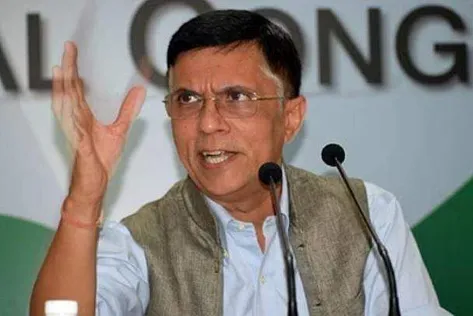
Sentencing in the criminal justice system is perhaps the most important exercise in the criminal justice process. It is one where all functionaries (as defined by the Code of Criminal Procedure) as well as the victim and the convict take centre stage. In many ways it is the culmination of a number of processes and the point where law comes down on the criminal with all its strength. In fact, it is also the link between the criminal justice system and the society as justice is ‘seen’ as being done. The common law form of criminal penalty provision confers upon the sentencing judge an enormous range of choices. The scope of what we call discretion, permits imprisonment for anything from a day to one, five, ten, twenty or more years. The statutes granting such powers characteristically says nothing about the factors to be weighed in moving to either end of the spectrum or to some place between.
Sentencing Framework
The Indian Penal Code (IPC) provides for 5 types of punishment which could be awarded by a competent court, namely death penalty, imprisonment for life, imprisonment (rigorous or simple) for a specified term, forfeiture of property and fine. A competent court can impose any of these sentences, except for cases where death sentence is imposed as in such cases the death sentence imposed by the sessions court needs to be confirmed by its jurisdictional High Court. ¬The IPC and other criminal statutes provide for a discretionary system of sentencing where the maximum as well as the minimum term of sentence is provided by the statute, and the judge has the discretion to determine the appropriate sentence.
The Code of Criminal Procedure, 1973 (Cr.P.C) lays down the general procedure for post-conviction hearing on sentences. This did not exist in the Cr.P.C of 1898 but was introduced in the new Code enacted in the year 1973. Section 235 of the Cr.P.C talks about judgment of acquittal or conviction under which it states that if the accused is convicted, the judge shall hear the accused on the question of sentence and then pass sentence on him according to law. Section 325 of the Cr.P.C stipulates for a situation where a magistrate, upon hearing the evidence for the prosecution and the accused, is of the opinion that the accused is guilty, and that he ought to receive a punishment different in kind from, or more severe than, that which such Magistrate is empowered to inflict, he may record the opinion and submit his proceeding, forward the accused, to the Chief Judicial Magistrate to whom he is subordinate. Now as per Section 235, the sentencing judge is to hear the accused on the issue of sentence and then must pass the sentence accordingly. Here the judge is to adjudicate upon relevant mitigating and aggravating factors however no set guidance for adjudicating the same is provided apart from the submission from counsels and the judge’s own experience and wisdom. Even under Section 325, there is no guidance provided as to how a magistrate may form an opinion with regard to the powers of sentence available to them being insufficient to adequately punish the convicted person.
Sentence Disparity in India
Sentence disparity has been a one of the most neglected affairs of the criminal justice system in India. The courts in most criminal appeals have often confined itself to statutory interpretation or to issues relating to fact determination, which has led to the criminal law in India becoming static, especially in terms of sentencing. Even the highest courts have failed to provide any guidance to be followed by the subordinate courts in terms of sentencing except for cases where death penalty could be imposed.
The Vidhi Centre for Legal Policy published its report in April, 2018 on the working of the Narcotic Drugs and Psychotropic Substances Act in the State of Punjab. The report specifically pointed out the disparities in sentences that were awarded to accused in pharmaceutical drug cases. For example in a case decided in the Special Court of Amritsar, an accused was sentenced to one year and six months’ imprisonment and a fine of 3,000 rupees for carrying 500 grams of dextropropoxyphene. On the contrary, in a case decided by the Special Court of Patiala, the accused was sentenced to 10 years’ rigorous imprisonment and a fine of 1,00,000 rupees for carrying 500 grams of intoxicant powder containing dextropropoxyphene. The quantity of drugs found on both persons was almost commercial quantity but in one case the judge gave a lenient sentence whereas in the other one the judge was of the view that the nature of recovery, i.e. 500 grams of intoxicating powder containing dextropropoxyphene is on the verge of commercial quantity thus the accused is not entitled to any lenient view. On examining various similar cases, the report concluded that sentencing for pharmaceutical drug offences under the NDPS Act varies dramatically across districts and even within districts. Similar is the trend across all criminal statutes as sentencing for almost all offences varies dramatically across states and even districts. A cardinal principle of criminal law is that the desert for offences similar in nature should also be similar. A system of criminal justice that allows the differential enforcement of its law is not a system that honours the principles of proportionality and equal treatment.
Dr. Mrinal Satish in his book Discretion, Discrimination and the Rule of Law, analysed cases of rape simpliciter, child rape and gang rape punished under Section 376 of the Indian Penal Code, appealed to and decided by several High Courts and the Supreme Court of India between the years 1984 to 2009. The analysis revealed that the appellate courts disagreed with the subordinate court decisions in more than 50 percent of cases. In rape simpliciter, the High Courts overturned the trial court’s finding of guilt in 44 percent of cases and altered sentences in 16 percent cases. In gang rape cases, High Courts overturned convictions in 37 percent of cases and altered sentences in 18 percent cases and in child rape cases, convictions were overturned in 29 percent of cases and sentences were altered in 20 percent cases. Interestingly the Supreme Court was more likely to disagree with High Courts, with convictions being reversed in 53 percent of cases and sentences being altered in 21 percent cases. The same trend was observed in cases of gang rape, where the Supreme Court overturned the High Court’s finding of guilt in 48 percent cases and altered sentences in 11 percent cases. However the important observation made in the study was the factors that are considered by the High Courts and the Supreme Court in deciding whether to convict and especially in deciding how to sentence the offenders. The unwarranted disparity in sentencing was primarily caused by three factors: first, courts considering stereotypes and rape myths in determining sentences; second was the inconsistent use and application of theories of punishment while determining the sentence and lastly the consideration of irrelevant factors, leading to arbitrariness.
Reasons for Discrepancies
According to Prof. Andrew Ashworth, a renowned jurist who also was a Professor of English Law at the University of Oxford, one of the major reasons for sentencing disparity is the different penal philosophies amongst judges and magistrates. Even Judge Marvin Frankel, an United States Federal Judge and a pioneer of sentencing guidelines in the US, argues that the wide and unbridled power that sentencing judges possess is unacceptable in a legal system that follows the rule of law. However this problem could be magnified exponentially in a situation where the sentencing judges had unlimited discretion to impose a sentence according to their subjective intuition, which invariably will differ and can be plagued by bias, ignorance and prejudice.
Another major reason for the existing disparity is the little sense being applied while introducing a new offence which results in an unprincipled and chaotic construction of criminal laws. Criminal statutes are often historical amalgams, with crimes and sentences being adjusted on a need to need basis or is often dictated by political pressure resulting in utter inconsistency and irrationality of penalty structure.
Commission Reports on Need for Sentencing Guidelines
In March 2013, the Committee on Reforms of Criminal Justice system, popularly referred to as the Malimath Committee, which was established by the Ministry of Home Affairs, in its report emphasised the need for having sentencing guidelines. The committee was of the view that even though the Indian Penal Code prescribes the offences and maximum and minimum punishment for the same, the judge yet has wide discretion in awarding the sentence within the statutory limit. There is no guidance for the Judge with regard to selecting the most appropriate sentence given the circumstances of the case and each judge exercises discretion accordingly to his/her own judgement. This unguided discretion has led to there being no uniformity in the judgements delivered.
Even the Law Commission of India in its 47th report, further elaborating on the same, said that a proper sentence is a composite of many factors like the nature of offence, the circumstances extenuating or aggravating the offence, prior criminal record of the offender, the age of the offender, the background of the offender with reference to education, home life, mental education of the offender, prospective rehabilitation of the offender etc. The Committee, to bring about certain regulation and predictability in the matter of sentencing, recommended for a statutory committee to lay guidelines under the Chairmanship of a former Judge of Supreme Court or a former Chief Justice of a High Court experienced in criminal law with other members representing the prosecution, legal profession, police, social scientist and women representative.
The Draft National Policy on Criminal Justice, popularly known as the Madhava Menon Committee, in its report stated that:
“Given the limited options in choice of punishments now available in the statutes and the inadequate deterrence in the sentence often imposed, there needs to be some serious rethinking on the philosophy, justification and impact of sentencing in the criminal justice administration. The quantum of fines were prescribed more than a century ago and the imprisonment in practice is reduced to a much shorter period through a variety of practices even when it is for life. Equality in sentencing is not pursued vigorously and there is no serious attempt yet to standardize the sentencing norms and procedures. The objects of punishment are not served in many cases as a result of such incoherent sentencing practices”.
The Madhava Menon Committee further recognised the need to have a radical change in the law and practise of sentencing and that a set of sentencing guidelines may be statutorily evolved to make the system consistent and purposeful.
The Supreme Court of India on the Need for Sentencing Guidelines
Justice S.B Sinha in his judgment in the case of State of Punjab vs. Prem Sagar [(2008) 7 SCC 550], pointed out that in our judicial system, we have not been able to develop legal principles as regards sentencing and even the superior courts have just made observations to this regard but have never issued any guidelines for the same whereas other developed countries have done so.
The Hon’ble Supreme Court of India even in the famous case of Bachan Singh vs. State of Punjab [(1980) 2 SCC 684], apart from the constitutionality of death penalty, also addressed the issue of sentencing guidelines. The majority was of the view that standardisation of sentencing discretion is a matter of legislative policy and hence, it is up to the legislature to formulate guidelines if it deems fit and since the legislature had not formulated sentencing guidelines when enacting the Code of Criminal Procedure in 1973, the Court was of the view that Parliament did not want to reduce or cabin judicial discretion. The Court in the Bachan Singh case however went ahead and formulated guidelines for imposing death penalty, specifically interpreting the term ‘special reasons’ in Section 354(3) Cr.P.C., set forth what is known as the ‘rarest of rare case’ doctrine. This doctrine lists circumstances that may be considered by courts in determining whether death penalty could be awarded in a particular case or not. These guidelines were held to be not exhaustive and further were elaborated in subsequent cases. However, Justice Bhagwati, disagreeing with the majority, in his dissent in the Bachan Singh case was of the opinion that unfettered and unchartered discretion conferred on any authority, even if it be the judiciary, throws the door open for arbitrariness, for after all a judge does not cease to be a human being subject to human limitations when he puts on the judicial robe and the nature of the judicial process being what it is, it cannot be entirely free from judicial subjectivism.
The UK Model
The UK could perhaps be a model for moulding our sentencing policy. The well-established council of sentencing has given clear guidelines on sentencing- how sentencing is to be done in various capacities. The council also invites public consultations to ensure sentencing meets demands of public justice. The objective of the council reads: ‘The Sentencing Council for England and Wales promotes greater consistency in sentencing, whilst maintaining the independence of the judiciary. The Council produces guidelines on sentencing for the judiciary and criminal justice professionals and aims to increase public understanding of sentencing.’
There is a clear list of mitigating and aggravating circumstances- sentencing can be altered based on these. This has led to great uniformity in sentencing policy as well as practices. The discretion within which the courts can sentence is governed by guidelines applied across the country in a uniform way.
The Coroners and Justice Act, 2009 also imposes a wide range of duties on the new council in addition to the obvious function of producing guidelines. The Council also has to publish a resource assessment of, as well as monitor, the operation and effects of its guidelines. In addition it has to draw conclusions about the factors which influence sentences imposed by the courts, the effect of the guidelines on consistency in sentencing and the effect of the guidelines on public confidence in the criminal justice system.
Conclusion
The question, is sentencing is an art or a science, is an elusive one. The answer to who should be sentenced, to what effect and for how long lies in a rationalised system. Inputs from the society, functionaries of the justice system as well as experts on the most effective sentencing policy is crucial. The purposes of sentencing- why we punish in the first placeshould be served in each sentence- no matter how small or large.
There is a need for developing a consistent policy relating to sentencing in India to curb the evil of disparity in sentencing, as also emphasised by several commission reports and Supreme Court judgments. In this regard, a sentencing commission, like the one in the UK, can be set up to formulate a policy and draft guidelines to ensure consistency in sentencing in India. A Sentencing Commission for India, like the one suggested by the 47th Law Commission Report, comprising of former Judges of both Supreme Court as well as of several High Courts experienced in criminal law with other members representing the prosecution, legal profession, police, social scientists and women representatives can be set up as a statutory committee to lay down sentencing guidelines, which would serve the larger interest of the society while not compromising on the principles of reformation/retribution and also would be in consonance with the spirit of the Indian Constitution and fundamental principles of criminal justice.
(Vishavjeet Chaudhary is a Barrister-at-Law (Inner Temple), Door Tenant at Lamb Building (A London based Barrister Chambers) and Advocate at the Supreme Court of India.. He is LL.B. (Hons.) (University of Kent); and LL.M. (Cambridge University) Arindam Bharadwaj is a Final Year Law Student at the Jindal Global Law School, Sonepat, Haryana.















